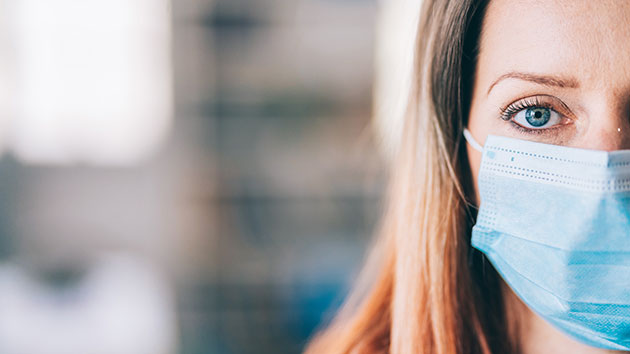
valentinrussanov / iStockBy Anne Flaherty, ABC News
Even people without symptoms should get tested for COVID-19 if they have reason to suspect they might have been exposed to the virus, including being part of a crowd, Dr. Robert Redfield, director of the Centers for Disease Control and Prevention, told ABC News on Friday.
The latest recommendation came as major commercial labs said their resources were under strain and President Donald Trump traveled to South Dakota, where a large number of Americans were expected to gather for the July 4 holiday and social distancing and masks were not required.
“Anyone who thinks they may be infected — independent of symptoms — should get a test,” Redfield told Dr. Jennifer Ashton, ABC News’ chief medical correspondent, and Aaron Katersky, ABC News Radio correspondent and host of the “Bringing Back America” podcast.
Redfield’s comments come as the country faces a wave of infections that health officials warn could overwhelm hospitals and spike death rates.
As of Friday, U.S. deaths topped 129,000, with reported daily cases climbing past 52,800 on both Wednesday and Thursday.
Redfield said the numbers of asymptomatic people infected with the virus is particularly alarming and thwarting traditional methods of tracking outbreaks. Investigations into specific cases have shown that anywhere from 20% to 80% of people infected don’t have symptoms, particularly those younger than 45, he said. The CDC has said 1 in 2 people with the virus don’t know where they got it from.
“We’re challenged with this virus,” he said.
Redfield’s comments represent another shift for the CDC. Early on in the pandemic, tests were limited to people in hospitals and health care workers. As capacity slowly expanded, the administration said it should be up to a person’s doctor to weigh a person’s risk factors.
More recently, health officials like Redfield and Dr. Anthony Fauci have urged people attending political protests or rallies to get tested, warning that asymptomatic carriers of the virus are unknowingly contributing to the worst health crisis the U.S. has faced in a century.
The CDC updated its testing guidelines online this week to include urging people without symptoms to get tested if they’ve come in contact with someone who has COVID-19, such as working the same shift at a job.
Encouraging more testing could be easier said than done. While capacity has increased dramatically in recent months, two of the top commercial testing labs — Quest Diagnostics and LabCorp — said recently that their testing capacity is under strain amid coronavirus outbreaks that hit predominantly southern and western states hardest.
This week’s climbing case numbers were considered the equivalent of a five-alarm fire, as Arizona, California, Florida and Texas accounted for more than half of the new cases.
In Texas, hospitalizations have doubled in two weeks, slamming the state’s health care system, according to The Texas Tribune.
One new challenge, Redfield said, was that the virus has mutated into a strain that seemed to spread more effectively. There was no evidence, however, that the strain of this virus was more deadly.
“It does have characteristics that in fact it’s become more infectious,” he added. “We have no evidence though that that’s associated with increased pathogenicity at this time.”
As for what happens next, Redfield said scientists are still learning about how the virus behaves. He said his biggest regret in the crisis was not pushing for access for CDC officials to go inside China the first week of January because they could have learned earlier the threat of asymptomatic carriers and “really changed the dynamics of our knowledge base for this outbreak.”
“We do have to stay humble and recognize that we’ve just been introduced to this virus,” he said. “We don’t really know this virus. This isn’t like flu, where you could sit down and ask me questions, and I can have a high degree of confidence that I know what to predict.”
For most people, the best thing to do remains wearing a mask, frequently washing one’s hands and staying at least 6 feet from others.
“We need all of us to take on the responsibility,” he said.
ABC News’ Eric Strauss contributed to this report.
Copyright © 2020, ABC Audio. All rights reserved.
